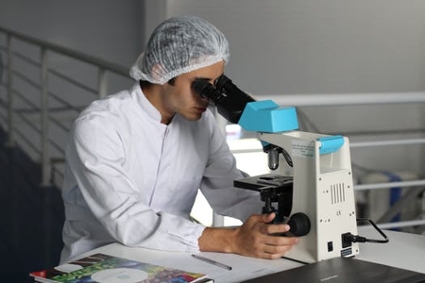I’m a graduating senior majoring in biochemistry. This last semester, I ended up registering for an industrial applications course. It’s the only non-advanced class I’m taking this semester, and yet it’s probably one of the most challenging. Almost everything we’ve covered in the class so far has been foreign to me. One of the first things we learned, for example, was the economic history of optical enhancement. We spent weeks learning about microscopes and telescopes. At the end of each week, a different student presents something related to a category chosen by the professor. This coming week is my turn, and I was given contamination control. It seems easy, but I was told healthcare examples are excluded. Those are the most obvious. What’s another relevant example to highlight?
This class sounds fantastic. The instruments and infrastructure that advanced industries rely on are quite frequently taken for granted. From scientists who grow cells in Petri dishes to those who calculate the movements of celestial bodies are all equally liable to overlook the importance of their tools. There’s absolutely no shortage of relevant examples to share with a category as broad as contamination control. Medical and pharmaceutical applications are definitely the most recognizable, but you’d be remiss to assume those are exhaustive.
Wikipedia defines contamination control rather well. According to them, “the aim of all contamination control activities is to permanently ensure a sufficient level of cleanliness in controlled environments.” That’s easy enough to grasp. The page goes on to describe the most common types of foreign contaminants that must be excluded from controlled environments (e.g., people, materials, equipment, water, etc.). One of the most common examples is the clean room, which transcends healthcare at this point.
This author at Terra Universal highlights six industries that depend on clean room technology to support highly sensitive processes. From aerospace and optics to nanotechnology and the military, there are numerous multibillion-dollar industries that utilize contamination control through clean rooms. That has the be the case because designing and constructing these facilities can quickly sore into the six and seven figures.
Authors at Cleanroom Technology have written at length about how much you can expect to spend on properly designed clean rooms. That price range falls between $2,000 per square foot to over $6,000 per square foot. In other words, 100 square feet of cleanroom space could cost you between $20,000 and $60,000. As you can probably imagine, the grand majority of industries already cited require much more real estate for each manufacturing plant they build.
Those numbers are still deceiving, because the same industries incur several other significant costs. The most critical facilities also require authorization. For instance, a commercial research laboratory in Ohio handling sensitive agents or materials would probably tap into experts like Western Environmental for cleanroom certification in addition to its design and construction. There’s also the personnel costs to take into account, which can be exceedingly expensive because many are highly educated technicians commanding white-collar salaries.
The key takeaway for your class is to see your professional environments differently. Learn to appreciate the instruments and infrastructure that support your scientific pursuits.
“Opportunities are usually disguised as hard work, so most people don’t recognize them.” — Ann Landers


